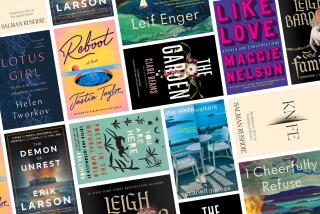Rediscoveries: âThe Treeâ by John Fowles
Re-Discoveries
An occasional look at classic reissuesâŚ
The Tree by John Fowles with a new introduction by Barry Lopez (Ecco: 94 pp., $13.99 paper) âThe key to my fiction,â wrote Fowles in 1979 when this essay was first published, âlies in my relationship with nature â I might almost have said, for reasons I will explain, in trees.â âThe Treeâ is part memoir, part explanation and part warning, one of the most beautiful, succinct and prescient pieces of writing we have. Fowles grew up in a suburb of London. His father was a triumphant controller of what little nature the family possessed â apple and pear trees in the backyard were lovingly pruned. During World War II, the family moved to a Devonshire village and Fowles discovered his true reverence for woods and wilderness. Our habit of naming and classifying has distanced us from nature: Nothing is more âpoetically just,â he writes, than Linnaeusâ insanity before his death. Itâs not so much nature that is in danger as our âattitude to it.â Nature is the source of our creativity; our relationship to it is nothing less than an art form. âThe Treeâ ends with a memory of Wistmanâs Wood, a fragment of primeval forest, a âur-woodâ of English Oaks in Dartmoor. âMy wood, my wood,â he writes, âit never shall be yours.â
.
The Mountain Lion by Jean Stafford ( New York Review Books: 240 pp., $14.95) Jean Stafford was born in Southern California, in Covina, in 1915, though much of her life was spent among the eastern literary elites. She narrowly survived marriage to Robert Lowell, then married Oliver Jensen, followed by A.J. Liebling. She wrote for the New Yorker, published three novels (âThe Mountain Lion,â 1947, was her second) and won a Pulitzer nine years before she died in 1979, for her âCollected Stories.â Stafford has a dry desert style â you feel the stillness and the heat in her writing, the swish of palm trees, voices of children, the sounds of sweeping beneath walnut trees, the whir of hummingbirds. âThe Mountain Lionâ begins in Covina â a brother and sister, 10 and 8, have scarlet fever. They are sent, one summer, to their uncleâs ranch in Colorado, where they learn to ride and hunt and shake off some of their protective city layers. At first, they are âunable to take in the huge, snaggle-toothed mountain ranges that completely circled the valley where the ranch lay, alarmed by the rapid rushing sound of the river which they could not see, frightened by the steady commotion of animal noises.â They are vulnerable and close when they arrive but come undone. In Ralphâs hurry to become a man he inadvertently kills the things he loves. And thereâs no going back. Stafford can write a real nightmare, the kind in which everything looks ominous, words cause permanent scars and a characterâs one shot at happiness is dashed by his very own hands.
God on the Rocks by Jane Gardam (Europa Editions: 195 pp., $15) Jane Gardam is better known in England than America â having won or been shortlisted for just about every prestigious prize theyâve got. âGod on the Rocks,â published in 1978, is set on Englandâs northern coast. Margaret Marsh, 8, escapes the suffocating presence of a baby brother (her mother and the newcomer are locked in a âpermanent pietaâ). Her blowsy New Zealand nanny takes her on day trips to the shore and for walks in the woods. It is on one of these excursions that Margaret meets Charles and his sister Binkie, once friends of her motherâs. The girl hears stories of her motherâs youth that explain not only her relationship to her parents but her very existence. Gardamâs appeal lies in part in her painterly style. It is easy to see the world through Margaretâs eyes, as a child and an adult â the ice cream, the flower beds, the crashing waves, the elderly painter at his easel. No matter how tense the family drama, Gardam adds a rich dose of stiff upper-lip humor, a bit of distance and perspective. âThereâll be a stop to all this one day,â one of Gardamâs characters meditates on servitude and class and all the traditional British baggage. âItâs another war we want.â
More to Read
The biggest entertainment stories
Get our big stories about Hollywood, film, television, music, arts, culture and more right in your inbox as soon as they publish.
You may occasionally receive promotional content from the Los Angeles Times.










